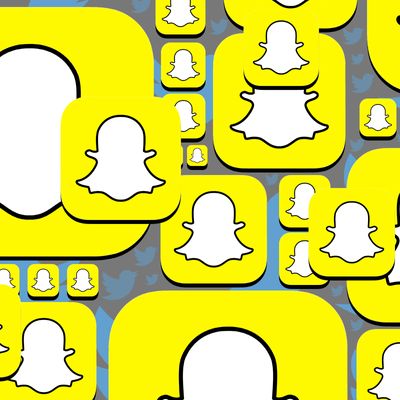
Bloomberg reports this morning that Snapchat, the ephemeral photo-and-video app popular among people younger than you, is now outpacing Twitter in its number of daily active users. According to Bloomberg’s sources, the app brings in 150 million users per day, up from 110 million just six months ago. Twitter, on the other hand, has a daily user base that’s currently hovering around 140 million.
Snapchat’s meteoric rise (it’s not even half as old as Twitter, which turned 10 this spring) can be attributed to many factors — it’s fun, it’s well-designed, it’s got an enormous amount of new content daily from the Kardashian family. But one reason it’s outpacing Twitter in particular is the fact that it doesn’t suffer from a problem known as “context collapse.” The temporary nature of its posts means less baggage and anxiety for users. Other platforms, like Twitter and Facebook, on the other hand, force users to consider a multitude of questions every time they type in the status box or upload a picture: Do I want my family to see this? Do I want my boss to see this? Do I want to see this two years from now?
That problem of juggling different audiences under one online identity doesn’t really exist on Snapchat. Your account is public, but, unlike on Twitter, there’s no discovery and no sharing; no strangers will accidentally stumble upon it and misinterpret your jokes. Unlike on Facebook, the process of choosing the friends who receive your snaps and messages is intuitive and built in to the process. Most of all, it’s based around data that by design won’t hurt you forever.
Snapchat’s success is the largest sign of social media trending away from a fully public mode: Facebook’s big focus right now is on private messaging. It’s building out its messaging-bot platform after having acquired the international behemoth WhatsApp for $16 billion in 2014. Messaging seems to be where people are fleeing to in the Great Context Collapse of 201X.
The question, then, is where all this leaves Twitter, which as we’ve noted, has its core strength in being “unflinchingly public.” But operating in a fully public space isn’t for everyone. Hell, it’s not even for most people. It’s for politicians, and entertainers, and athletes, and aspiring personal-brand builders (and, yes, narcissistic journalists, too).
The era from roughly 2005 to 2015, when social media was mostly public, is going to feel like a weird blip in the web’s timeline, whereas now people realize that maybe not everyone needs to see everything. How Twitter and Facebook respond to that conundrum remains to be seen.





























